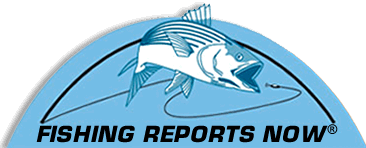From the National Oceanic Atmospheric Administration (NOAA)
Fisheries Service:
The Report to Congress on the Status of U.S Fisheries has been released and shows some progress, but also identifies several new stocks that are overfished or experiencing overfishing in U.S. marine waters. This report characterizes stocks under two categories:
1) subject to overfishing and
2) overfished. A stock that is subject to overfishing has a harvest rate above the level that provides for the maximum sustainable yield, while a stock that is overfished has a biomass level below a biological threshold specified in its fishery management plan.
Two stocks were taken off the overfishing list, Gulf of Mexico vermilion snapper and Atlantic sea scallop; Gulf of Mexico vermilion snapper was also taken off the overfished list. However, six stocks were added to the overfishing list in this annual report (Gulf of Mexico gag grouper, Gulf of Mexico gray triggerfish, Atlantic dusky shark, Eastern Pacific yellowfin tuna, petrale sole, and winter skate) and six stocks were added to the overfished list (Northern and Southern stocks of monkfish, South Atlantic pink shrimp, Atlantic sandbar shark, porbeagle and dusky shark). Within 1 year of being notified that overfishing is occurring in a particular fishery, the responsible Regional Fishery Management Council must take action to address that overfishing. The stocks that have been identified as overfished will now require rebuilding plans.
These newly identified problems underscore the importance of recent calls from the President and Congress to end overfishing and ensure the long-term sustainability of marine fisheries. The recent reauthorization of the Magnuson-Stevens Fishery Conservation and Management Act contained a new mandate to end all overfishing by 2010 through the use of annual catch limits. All stocks, including those at sustainable levels, are required to have annual catch limits by 2011 in order to prevent future overfishing.
NOAA invites the public to be involved as we develop new guidelines for implementing these strict requirements to end overfishing. At the same time, it is important to be aware of the big picture. NOAA evaluates roughly half of the nation's 530 managed fisheries for population status and harvest rates. These stocks account for roughly 90% of species harvested in U.S. commercial and recreational fisheries. Of the assessed stocks, 75% are at sustainable levels, while 47 stocks or 25% are overfished. 80% of the assessed stocks have acceptable fishing rates, while 48 stocks or 20% are experiencing overfishing.
For more information, the report is available online. Updates are posted on a quarterly basis.





